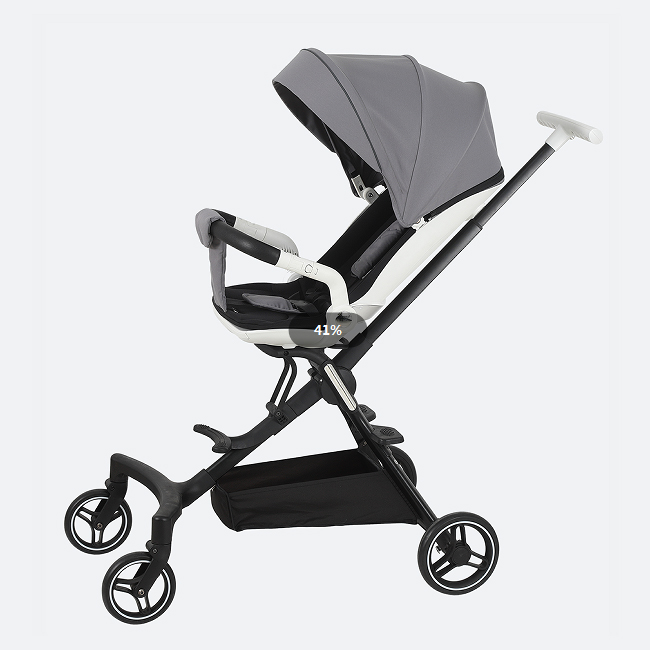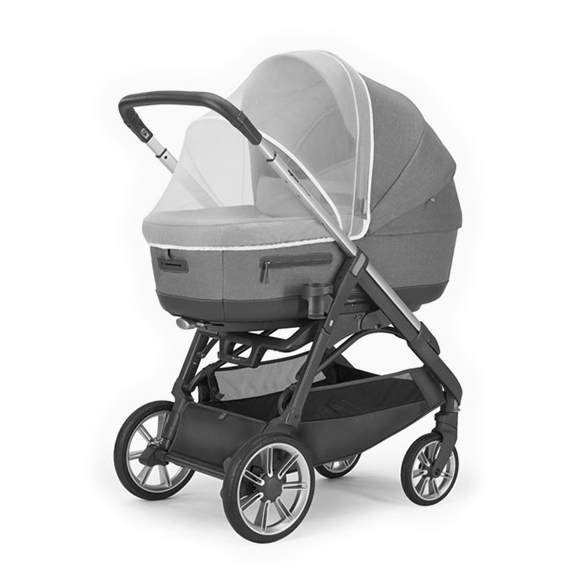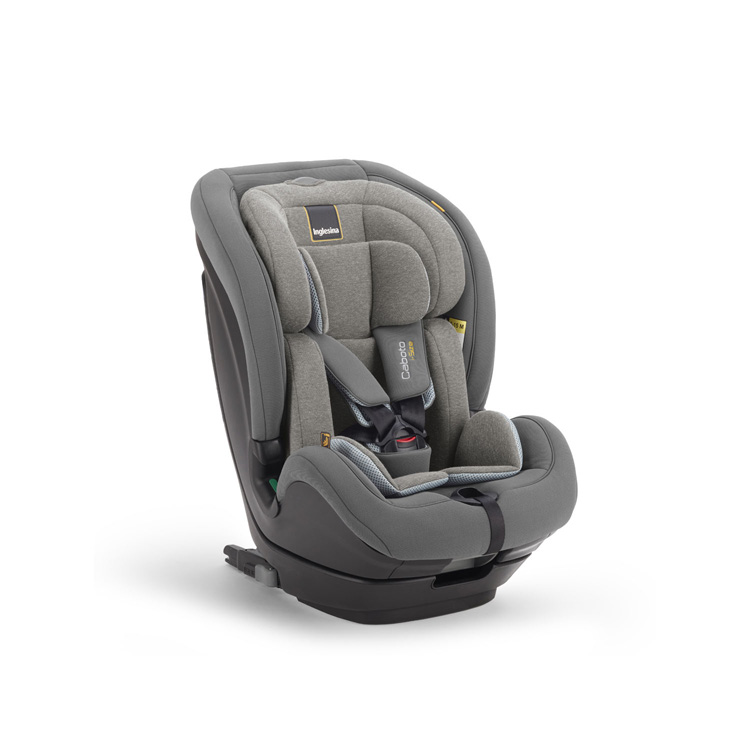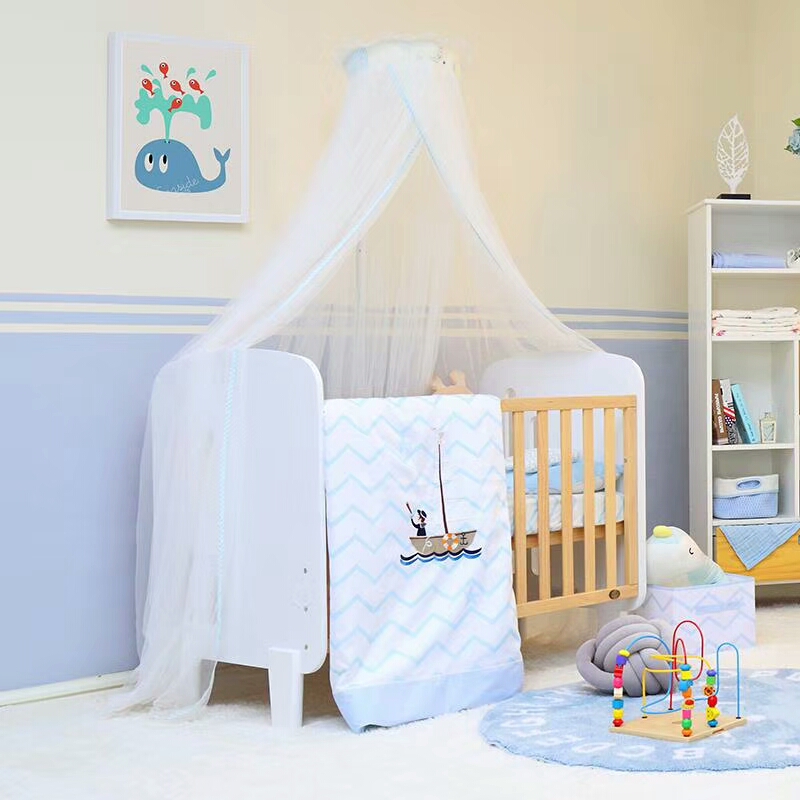Misconception 1: Let the baby use a sitting stroller too early
Risks:
Spinal deformation and visceral compression: Babies under 6 months old have a C-shaped spine and weak muscle support. If a sitting stroller that cannot lie flat is used too early, it may cause scoliosis or hunchback, and even affect the development of internal organs.
Case warning: A 6-month-old baby had spinal deformation and crying due to long-term nesting in a soft-carry sitting stroller, and needed medical correction.
Correct approach:
Age-based purchase:
0-8 months: Choose a high view stroller that can lie completely flat to support the natural development of the spine.
8 months and above: Gradually transition to a dual-purpose sitting and lying type, and ensure that the backrest is hard and adjustable
Misconception 2: Stopping baby stroller without braking
Risks:
Sliding out of control: Unlocked carts may slide due to ground slope, vibration or external force, causing them to roll over, slide into traffic or water. Cases show that unbraked carts have slid into the road and been crushed by trucks, or fallen into rivers.
Correct approach:
Develop a conditioned reflex: Regardless of the length of the stop, immediately apply the brakes and check whether the wheels are fully locked
Misconception 3: Not wearing a seat belt of baby stroller
Risks:
Injuries from falling and collisions: On bumpy roads or when stopping suddenly, the baby may slide out of the stroller due to inertia, hit the head against a hard object or fall, causing concussion and intracranial hemorrhage.
Correct approach:
Use a five-point seat belt throughout the entire process: adjust the tightness to fit four fingers of an adult, and ensure that the shoulder strap, waist belt and hip belt are all fixed in place
Misconception 4: Pushing a stroller up and down an escalator
Risk:
Escalator rollover: The steps of the escalator are narrow, and the stroller can easily get stuck in the gap or the center of gravity is unstable, causing the person and the stroller to roll down. In the case, the parent fell due to inertia, and the three generations of grandparents and grandchildren fell at the same time.
Correct approach:
Prefer to use a vertical staircase: If an escalator must be used, one person should hold the baby and the other person should carry the stroller alone
Misconception 5: Covering the stroller with a shade cloth or blanket
Risk:
Heatstroke: Experiments show that the temperature inside a stroller covered with a blanket can reach 37°C in an environment of 25°C after one hour, causing dehydration, heatstroke, and even coma in the baby.
Correct approach:
Use awnings for ventilation: Choose a multi-level sunshade design, wear breathable clothing, and avoid complete closure
Misconception 6: Using the stroller as a storage basket
Risks:
Imbalanced center of gravity and overturning: Hanging heavy objects (such as backpacks and shopping bags) on the handrails can easily cause the stroller to overturn and injure the baby. In the case, the stroller overturned due to overloading after shopping in the supermarket, causing a head injury to the baby.
Correct approach:
Use the bottom storage basket: The load weight must be lower than the weight limit marked on the stroller, and it should be placed close to the rear wheels to stabilize the center of gravity
Misconception 7: Neglecting to inspect strollers regularly
Risks:
Looseness and failure of the structure: Screws falling off or lock failure may cause the stroller to fold suddenly, pinching the baby's limbs or causing suffocation.
Correct approach:
Monthly comprehensive inspection: focus on the frame joints, wheel bearings, brake performance and seat belt firmness
Misconception 8: Parking on a slope without double locking
Risk:
Gravity sliding: Single wheel brakes alone cannot resist the gravity of the slope, and the stroller may slide faster. Medical research shows that such accidents account for 15% of stroller injuries.
Correct approach:
Dual wheel locking: When parking on a slope, press the front and rear wheel brakes at the same time and test the stability of the stroller.
Misconception 9: Folding or carrying the stroller incorrectly
Risk:
Crushing injury: When moving the stroller with the person, if the folding device is accidentally folded, the baby's fingers or chest may be pinched, causing respiratory distress.
Correct approach:
Hold the baby first and then fold the stroller: When carrying stairs or vehicles, be sure to take the baby out first and then handle the stroller separately.
Misconception 10: Ignoring age-based functions and brand compliance
Risk:
Design defect hazards: Three-no products or non-age-based strollers may lack key designs such as shock absorption systems and hard backrests, which aggravate the impact of bumps on the baby's head and spine.
Correct approach:
Look for safety certification: Give priority to brands that have passed the national standard (GB) or the EU standard (EN1888), such as Goodbaby, Cybex, etc., to ensure that the frame strength and heavy metal content meet the standards.






